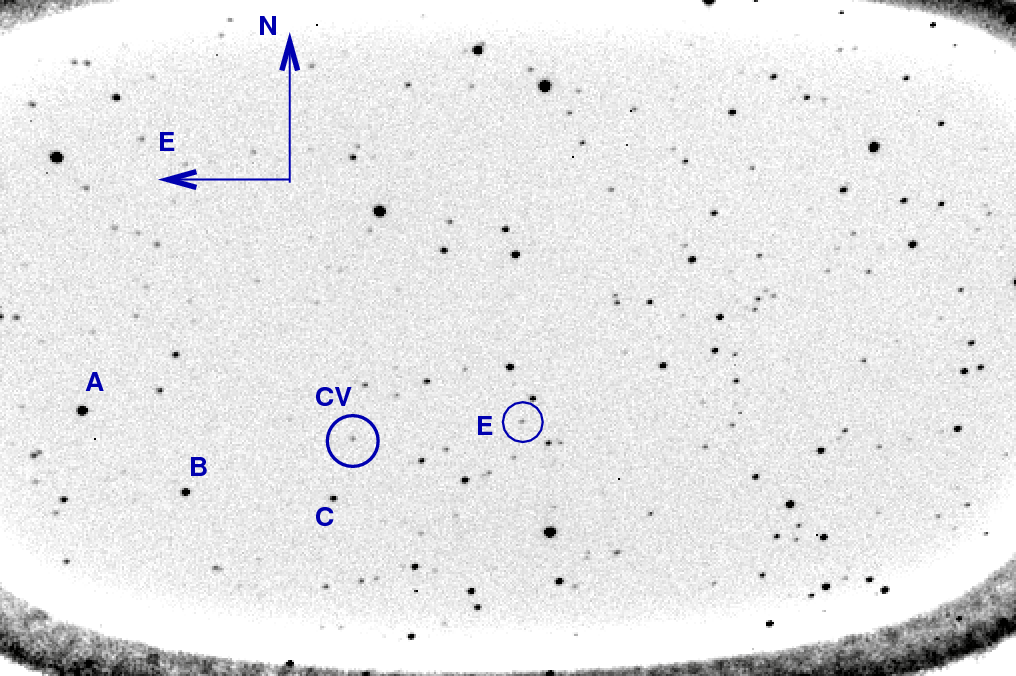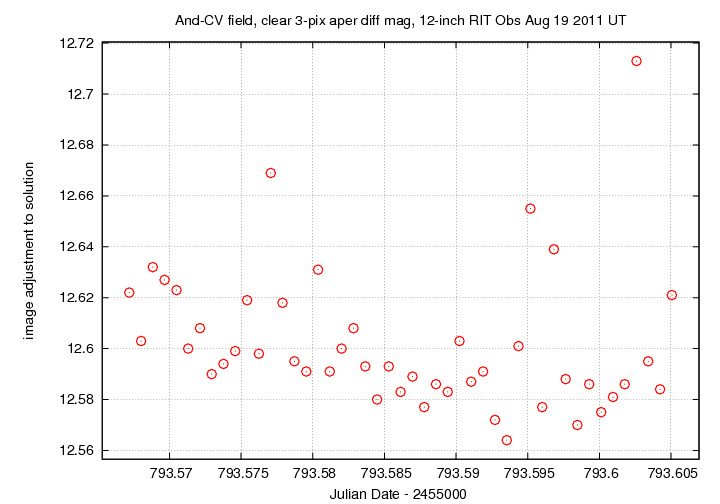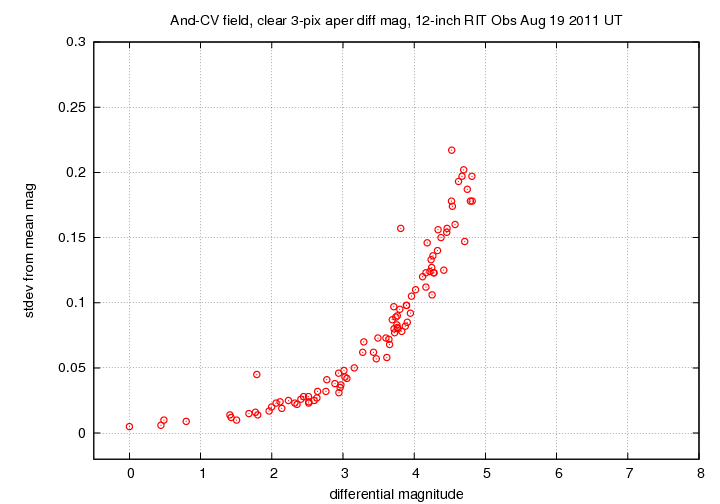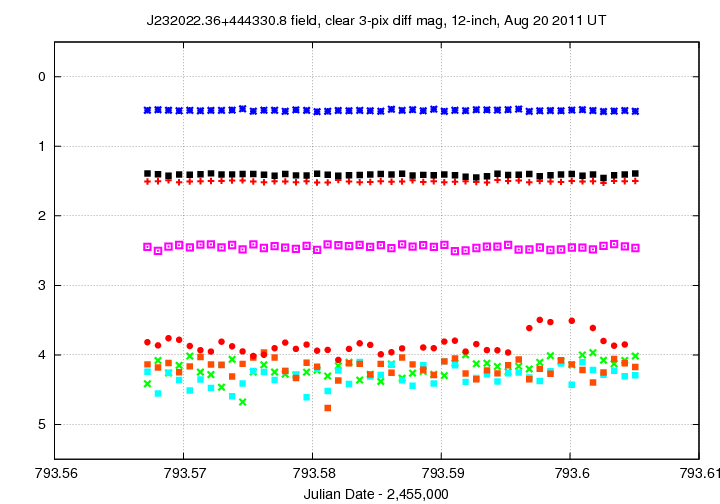
On the night of Aug 19/20, 2011, I observed the newly discovered cataclysmic variable star MASTER OT J232022+444330. The sad fact is that this CV is just too faint for me to acquire any good measurements. Sigh.
The setup was:
Notes from the night
This is a chart of the field, based on one of the 60-second exposures. The field of view is about 12 by 9 arcminutes.

The label "CV" marks the cataclysmic variable. The strange appearance around the edges of the frame are due to moisture on the chip. This was the first time I used the Observatory since returning from a long trip overseas, and the dessicant in the camera was exhausted.
I measured the instrumental magnitude of each star with aperture photometry, using a radius of 3 pixels = 4.2 arcseconds and sky defined by an annulus around each star. Following the procedures outlined by Kent Honeycutt's article on inhomogeneous ensemble photometry, I used all stars available in each image to define a reference frame, and measured each star against this frame.
One output of the ensemble solution is the value of the zero-point of each frame relative to the others. In the graph below, I plot this zero-point as a function of time. Note the slight decrease over the short run -- due to the object rising in altitude. The few outliers are due to images with slight guiding errors; I kept these images in the analysis, since the differences are less than 0.1 mag.

Below is a graph of the scatter in differential magnitude versus magnitude in the ensemble solution.

The floor of this diagram is about 0.006 mag, which indicates pretty good data. The outlier near mag 1.8 is near the edge of the frame, and I discarded it from the solution.
Light curves for selected stars (the CV and stars A - F) in the field are shown below. The target is shown by light green crosses.

Below is a closeup of the light curve of the CV and a couple of comparison stars (which I have shifted vertically for convenience).

The signal-to-noise ratio of the target CV is just too small, due to the faintness of the target. The star labelled "C" in the chart above is USNO B1.0 1347-0507850, which has an R-band magnitude of around 14.5. The CV was about 1.7 magnitudes fainter in my unfiltered images, so it was roughly magnitude R = 16.2. I just can't gather enough photons to measure such a faint star without using long exposures.
Oh, well. It was worth a try, and was a good check on the equipment, which all worked pretty well.
Last modified 8/20/2011 by MWR.